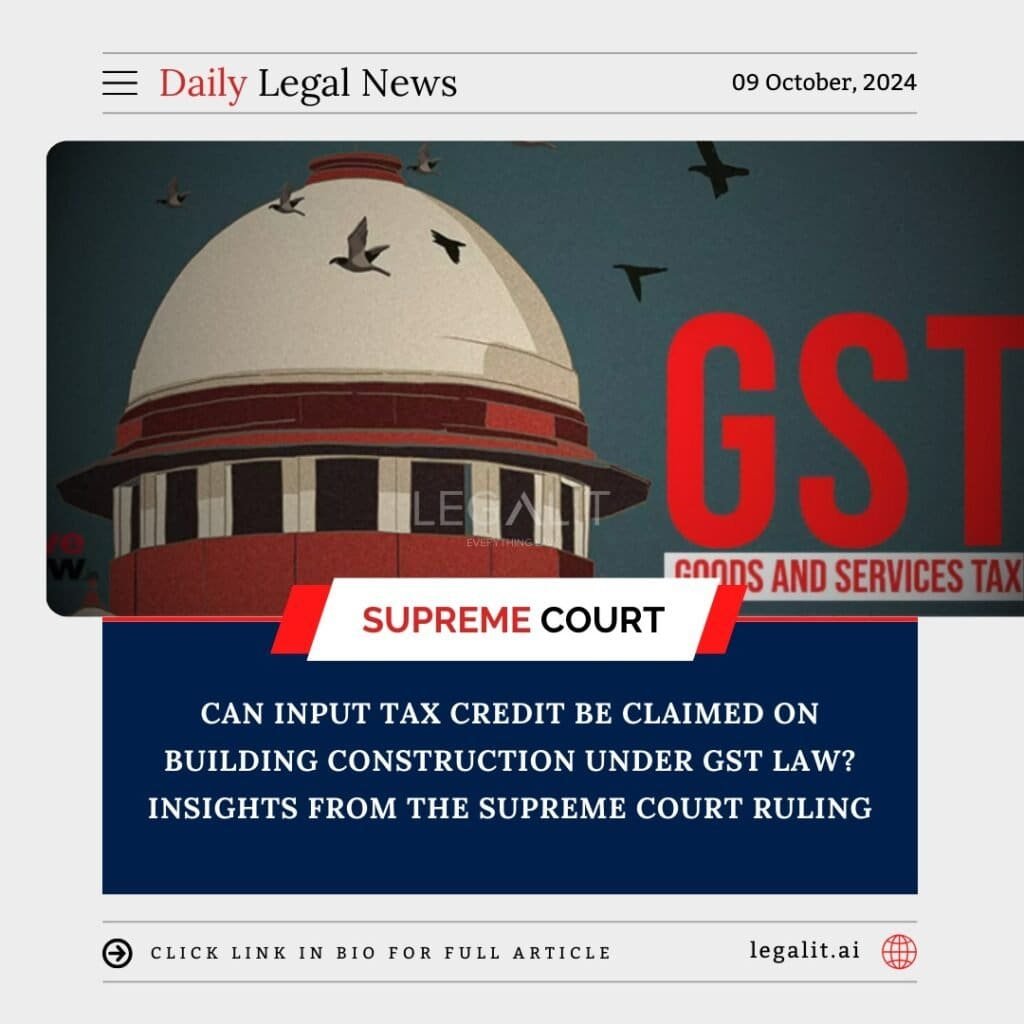
Background of the Case
The question of whether input tax credit (ITC) can be claimed on the construction of buildings under the Goods and Services Tax (GST) regime has been a contentious issue in India. This legal query gained significant attention when the Supreme Court of India was called upon to clarify the conditions under which ITC can be claimed for construction services. The case revolved around the interpretation of GST provisions and the eligibility of taxpayers to claim ITC for expenses incurred during the construction of immovable property.
Supreme Court’s Ruling and Reasoning
In a landmark judgment, the Supreme Court ruled that ITC cannot be claimed for construction activities. The court emphasized the nature of construction services and how they relate to the overarching objectives of the GST framework. The court’s reasoning was based on the following points:
- Nature of Construction: The court distinguished between goods and services, stating that construction services do not fall under the category of inputs or capital goods eligible for ITC. This interpretation aligns with the provisions of the GST Act, which delineates the scope of ITC claims.
- End Use of Services: The ruling reiterated that ITC is primarily available for inputs that are used in the course of taxable supplies. Since construction of a building is treated as an exempt supply (in the context of the final product being immovable property), it does not warrant ITC.
- Legislative Intent: The court underscored the legislative intent behind the GST law, which aims to streamline taxation and ensure that ITC is only available for goods and services that ultimately contribute to the taxable supply chain.
Implications of the Judgment
The Supreme Court’s ruling has far-reaching implications for businesses and taxpayers involved in the construction sector:
- Financial Impact: Companies engaged in construction may face increased costs due to the inability to claim ITC on construction-related expenses. This can affect project profitability and pricing strategies.
- Tax Compliance: The judgment may lead to stricter compliance and record-keeping requirements for businesses, as they need to ensure that they correctly categorize their expenses concerning ITC claims.
- Future Litigation: This ruling sets a precedent that may influence future cases and disputes related to ITC claims in construction and allied services, potentially leading to more litigation as businesses seek clarity on similar issues.
Need for Reforms in GST Law
Given the complexities and ambiguities highlighted by this ruling, there are calls for reforms in the GST law regarding ITC eligibility:
- Clarification of Definitions: To prevent confusion, it is crucial for the government to provide clearer definitions regarding what constitutes inputs, capital goods, and exempt supplies.
- Stakeholder Engagement: Involving stakeholders, including businesses and legal experts, in the legislative process can help create more comprehensive and practical tax regulations.
- Review Mechanisms: Establishing a mechanism for periodic review of the GST provisions can help address emerging issues and adapt to the changing economic landscape.
Conclusion
The Supreme Court’s ruling on the claimability of input tax credit on building construction under the GST law has significant implications for the construction industry and tax policy in India. While the court’s decision is grounded in the interpretation of existing laws, it underscores the need for ongoing dialogue and reform to ensure that the GST framework remains equitable and effective for all stakeholders. As businesses navigate these complexities, clarity in legislation and administrative processes will be crucial in fostering a conducive environment for growth and compliance.